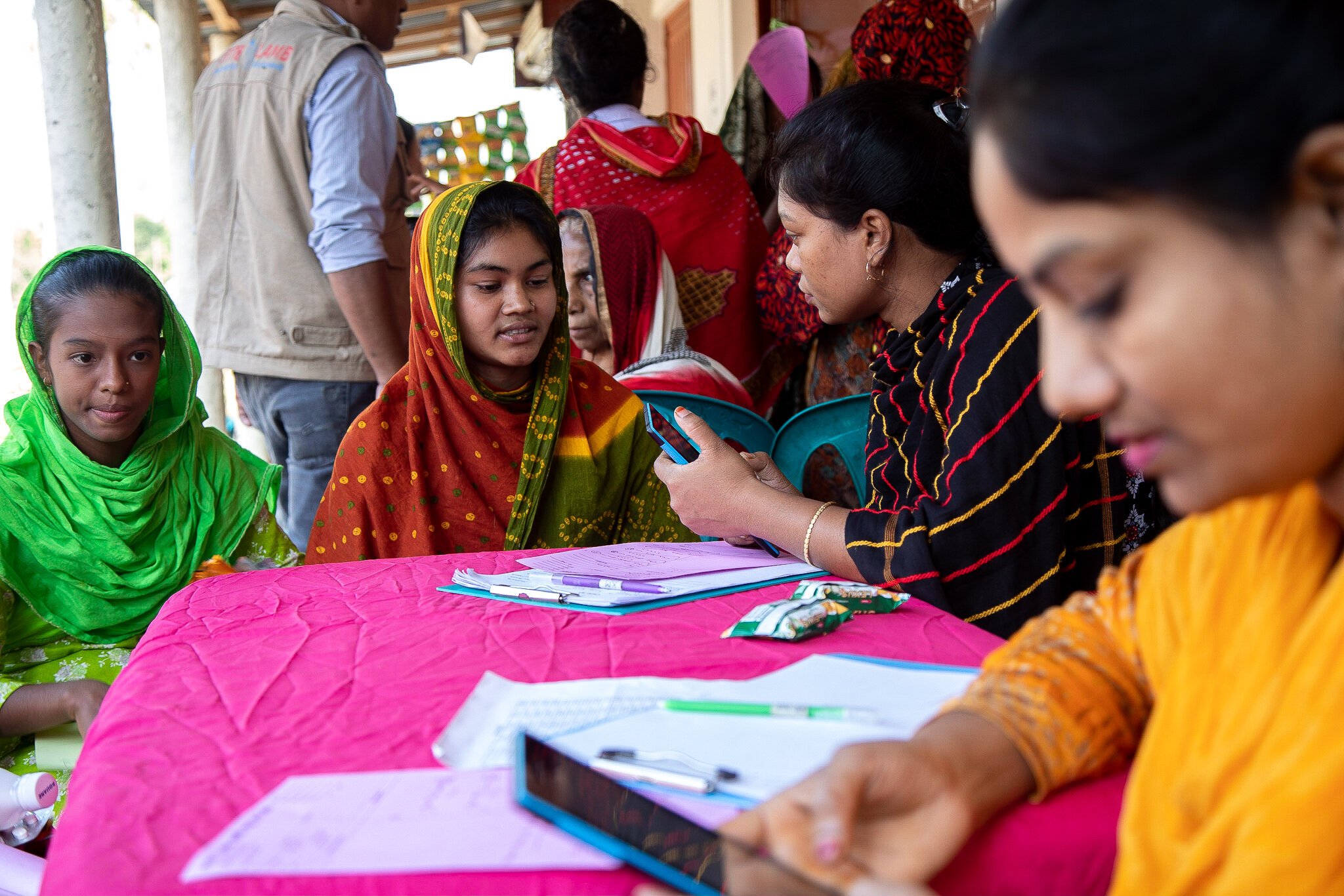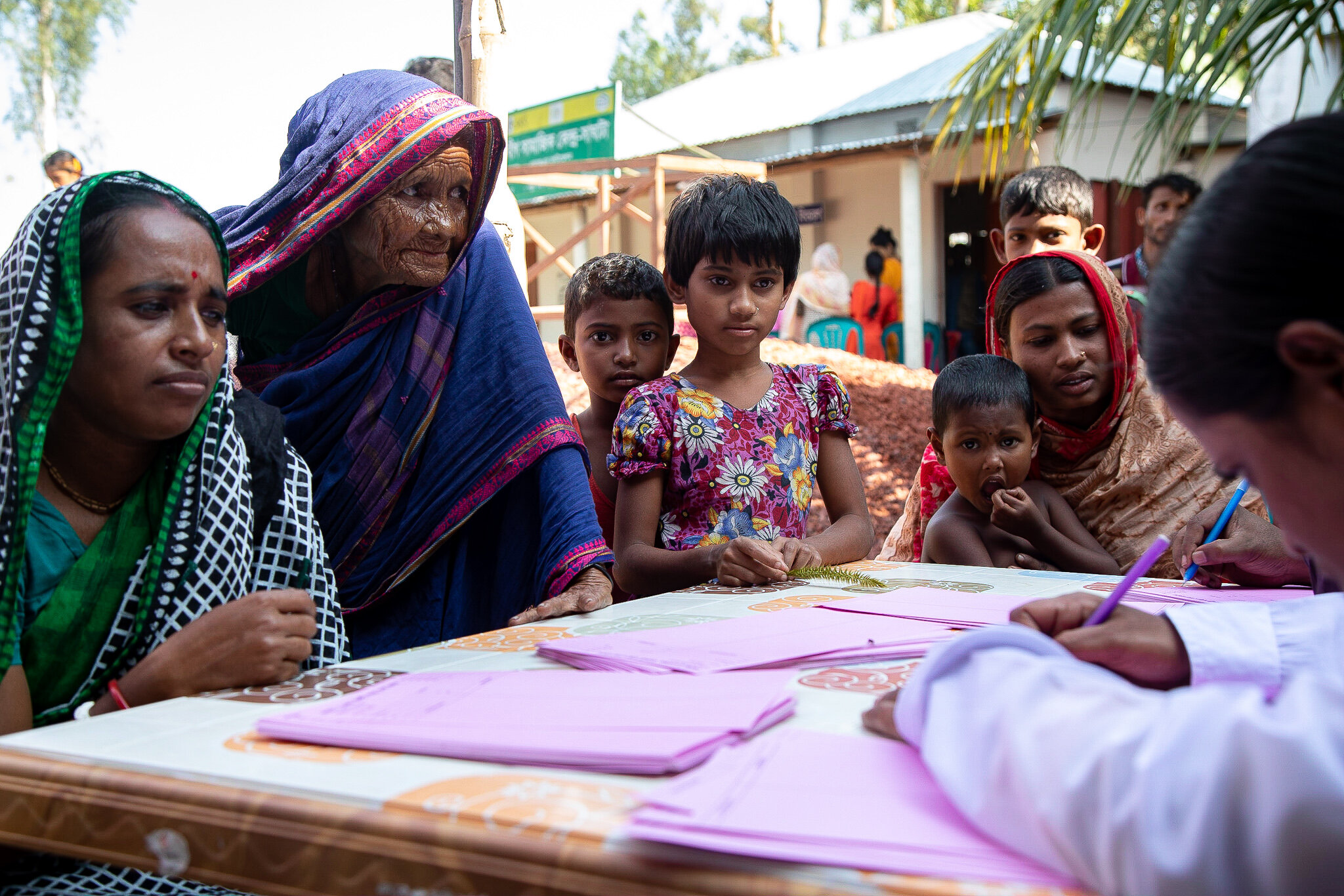
Community
Overview Community Health and Development Program (CHDP)
LAMB community health work is focused on communities in North West Bangladesh, in the administrative districts concerned of Dinajpur, Rangpur, Nilphamari and Lalmonirhat.
The work is focused on poor communities, irrespective of their ethnic grouping or religion. We work with a large population from tribal groups, especially Santal and Urao. While particular emphasis is given to caring for women and children, all members of the communities have access to the clinics and LAMB Hospital.
For more information about LAMB’s community work, please email chdp@lambproject.org.
LAMB CHDP objectives:
Improving the lives of rural people through integrated health and community development activities
Working toward God’s ideal of equitable communities by empowering poor people for sustainable development, including reduced community vulnerability to natural disasters
Collaborating with authorities of the Government of Bangladesh health services and elected officials, to build capacity for a reliable, functional rural health system
CHDP’s activities aim to increase good health decision making of individuals and communities.
Household and group teaching for health promotion and disease prevention
Primary care clinical service provision, including community midwifery
Group facilitation for community mobilisation using a participatory action research approach
Local community leadership capacity building: oversight/accountability of local health systems. Community resource mobilisation for health, preparedness for upcoming natural disasters and advocacy with elected leaders and government health officials
LAMB applies a holistic and integrated approach to health in its community activities. Spiritual, social, and emotional health are integral. In some areas LAMB builds capacity of local church members to reach out to neighbors with health and development initiatives, as a practical demonstration of God’s love.
LAMB staff work across a continuum of care, from households to village level in local clinics, to tertiary care at the hospital. This linked structure increases the trustworthiness of services. Staff at the local level are known to be linked to LAMB Hospital, a high level of quality control is always present, and the referral system is straightforward.
Health Services
The core elements of the health services provision by CHDP are:
A network of Village Health Volunteers involved primarily in health promotion and case finding - identifying women and children at high risk
25 Safe Delivery Units with satellite clinics
Assisting with activation of Government Health Service facilities through training of staff and developing community capacity for oversight and accountability.
Specialised training and service capabilities
Village Health Volunteers (VHVs)
VHVs are the front line caregivers of the community health programmes. There are currently 480 VHVs in CHDP target unions, each responsible for 150-300 households.
LAMB provides the women, who are chosen by their own communities, with initial training in primary health care, followed with bi-monthly refresher training. Trained to gather neighborhood women into action groups these women are key mobilisers for health care activities:
Providing simple health education at the household level
Encouraging women to have antenatal check-ups, vaccinations, curative care at Health Care Centers and to use family planning methods
Distributing contraceptives, oral rehydration solutions and worm medicine
Encouraging facility deliveries, acting as women’s advocates during labor and delivery and providing postnatal care
Linking villagers to clinics and accompanying women for maternity care
Community Health Workers are paid staff who support several VHVs across covering a wider area. In addition to providing health training to communities, they help mobilise groups (women, children, adolescents and informal local leaders) through facilitating discussions to prioritise local health issues, and then design and implement local initiatives to address them.
Clinics and Safe Delivery Units
Safe Delivery Units are open 24 hours a day, 7 days a week. Primarily staffed by Government-certified community skilled birth attendants who are trained through LAMB’s 6 month Community Midwifery Course. Birth attendants provide antenatal, delivery and postpartum care.
Clinics are mostly hosted in government Union Health and Family Welfare Centres. LAMB medical assistants and nurse-midwives visit the Clinics regularly to ensure ongoing technical quality assurance. The standards at the Clinics and Safe Delivery Units are monitored by LAMB and are trusted and valued by the communities.
Specialised Training and Services
Adolescent Health is a specialised programme within the CHDP. It monitors health and seeks to strengthen awareness of reproductive health issues. It increases the capacity for self-advocacy, especially in girls, who by societal practice are often married between the ages of 13-17.
Maternity High-Risk Observation: a low-dependency unit in LAMB Hospital is used for the observation of high-risk pregnant mothers referred by community clinics.
Tuberculosis: The CHDP unit identifies cases and initiates treatment either in hospital or in the community.
Rehabilitation of disabled: The disabled population of rural Bangladesh are underserved. LAMB provides home-based and clinic-based therapy, primarily to children. Severe or newly-identified children are also referred to LAMB Hospital Rehabilitation Centre with their parents for intensive residential therapy, or corrective surgery.
Emotional and Spiritual Health
Emotional and spiritual health is recognised as a key to total health. Mission-Vision-Values Counsellors (or community chaplains) ensure Biblically-based justice and holistic health principles are part of field staff and community training and meeting discussions. Counsellors sometimes function as peacebuilders in the event of conflict. Each LAMB staff member, regardless of religious background, knows that prayer is used as a counseling tool and fear-reduction approach.

